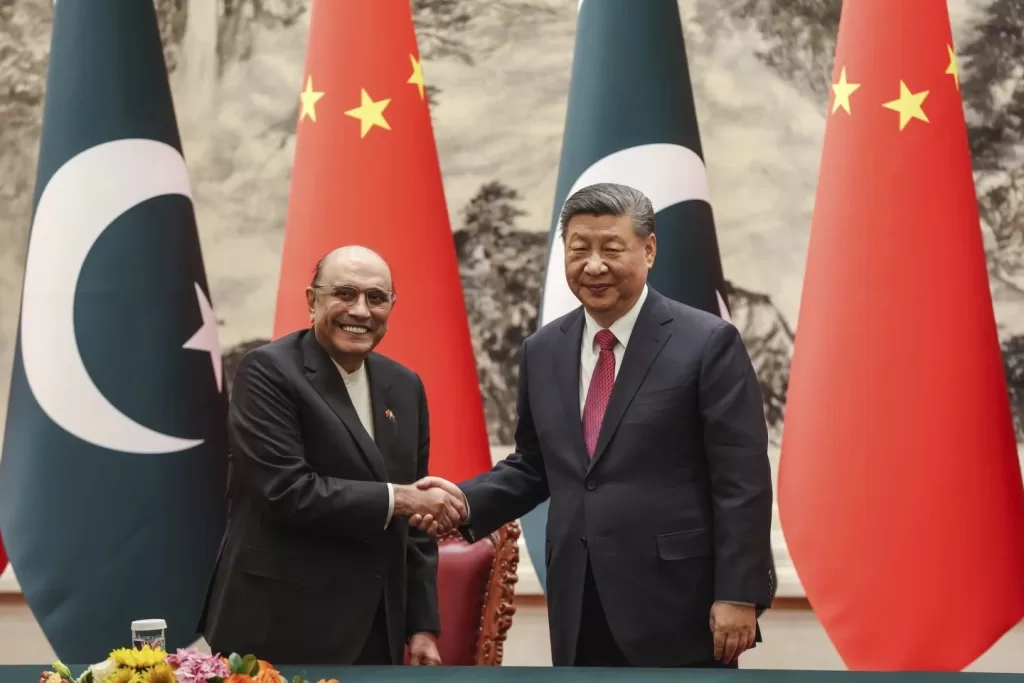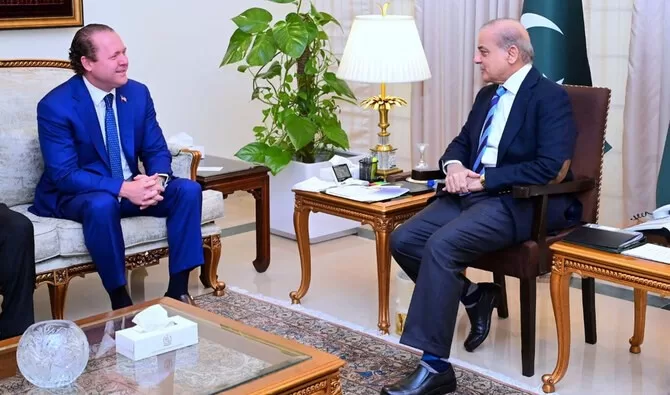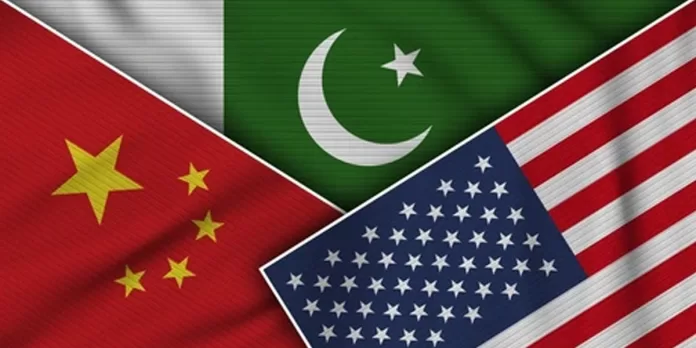Pakistan’s foreign policy has long been defined by a delicate balancing act between two global giants – the United States and China. Over the decades, this engagement has shifted from periods of close cooperation with Washington to an increasingly strategic partnership with Beijing. Historically, Islamabad has oscillated between leveraging U.S. military support and cultivating economic and diplomatic ties with China, even playing a pivotal role in facilitating U.S.-China rapprochement during the Cold War (1970s). Today, this duality persists, but the dynamics have shifted. Washington’s inconsistent policies – from Cold War-era aid to abrupt sanctions and aid freezes – have often left Pakistan vulnerable. Recent U.S. sanctions on Pakistan’s missile program, viewed as discriminatory by Islamabad, reinforce concerns that Washington’s priorities do not always align with Pakistan’s national interests. In contrast, China offers consistent support in infrastructure and energy development without restrictive conditions, exemplified by agreements under CPEC. However, the U.S. remains a key player in international financial institutions like the IMF and World Bank, which are crucial for Pakistan’s economic stability. Cutting ties with Washington would isolate Pakistan from critical financial and strategic resources.
In 2025, this balancing act faces new challenges as shifting U.S. policies, China’s economic ascendancy, and regional volatility force Pakistan to reexamine its options. The intensifying US-China rivalry has given rise to competing geopolitical and economic blocs, each with direct implications for Pakistan’s strategic positioning. On one side, the Quad (US, Japan, India, Australia) and AUKUS (US, UK, Australia) seek to counterbalance China’s influence, inadvertently bolstering India’s regional role and complicating Pakistan’s security calculus. Meanwhile, the Indo-Pacific Economic Framework (IPEF) presents an alternative to China-led trade networks, while NATO’s expanded focus on China extends Western strategic influence into Asia. On the other hand, the Regional Comprehensive Economic Partnership (RCEP), which includes China, ASEAN, Japan, South Korea, Australia, and New Zealand, consolidates Beijing’s economic leadership in the region.

Amid these developments, Pakistan is increasingly engaging with an emerging China-Russia-Turkey-Middle East bloc, marked by growing economic, defense, and energy cooperation. Islamabad’s deepening ties with China through CPEC, strategic coordination with Russia, defense collaboration with Turkiye, and economic engagement with Gulf states reflect its alignment with this evolving multipolar order. Recent events – such as the re-election of Donald Trump, which has brought transactional shifts in U.S. foreign policy, alongside high-level visits like President Asif Ali Zardari’s trip to Beijing – have intensified these dynamics. The choice before Islamabad is no longer simply choosing a de-hyphenation policy by severing ties with an inconsistent partner or exclusively pivoting to one. Instead, it is about skillfully hedging its bets to preserve diversified, robust relations with both superpowers while positioning itself as a potential bridge between them. This nuanced approach allows Pakistan to navigate the complexities of a multipolar world, ensuring strategic autonomy, economic stability, and regional security.
Economically, Pakistan is diversifying its partnerships to mitigate risks. CPEC anchors Beijing’s long-term vision for Islamabad, with projects like railway upgrades and Gwadar Port expansion driving infrastructure development. Meanwhile, U.S. private-sector ventures, such as the January 2025 visit by a U.S. delegation of businessmen, led by Texas hedge fund manager Gentry Beach, which focused on engaging Pakistan’s private sector in real estate, minerals, and energy, signal evolving U.S. interests. However, reliance on Chinese loans and Middle Eastern capital, like Saudi Arabia’s Reko Diq mine project, underscores Islamabad’s quest for alternatives amid U.S. aid reductions. Technologically, Pakistan is deepening its cooperation with China beyond traditional infrastructure projects. Building on its participation in China’s Chang’e-8 lunar mission, Pakistan recently announced plans to train its first astronaut for a mission aboard China’s Tiangong Space Station by 2028. While this collaboration opens access to advanced Chinese space technology –ranging from lunar rover development to satellite launches – it also raises concerns that Pakistan might become a “junior partner” unless it simultaneously develops its indigenous capabilities.
Militarily, Pakistan navigates competing pressures. U.S. defense deals with India, including F-35 fighter jets and semiconductor investments, heighten Islamabad’s security concerns, nudging it closer to Beijing for military support such as J-35 stealth fighters and submarine technology. Yet, counterterrorism cooperation with Washington persists, exemplified by Pakistan’s decisive role in arresting ISIL-K commander Mohammad Sharifullah, implicated in the 2021 Kabul airport bombing. This collaboration earned Pakistan, a rare public thanks from President Trump, and underscoring robust military-to-military ties despite broader friction.
Regional security further complicates alignment. Both the U.S. and Pakistan share concerns over Taliban-governed Afghanistan potentially becoming a terror haven. However, Islamabad accuses the Taliban of harboring anti-Pakistan militants like the Tehreek-e-Taliban Pakistan (TTP), a charge that strains its alignment with Washington. Also, U.S. support for India’s stance on Kashmir continues to exacerbate Indo-Pak tensions, with Islamabad condemning Washington-New Delhi joint statements as one-sided.
A hedging strategy – maintaining robust ties with both powers – offers Pakistan a balanced, pragmatic solution that maximizes benefits while mitigating risks. Engaging Washington in intelligence sharing and military training preserves access to U.S. innovations and financial markets. Simultaneously, deepening ties with Beijing through CPEC initiatives strengthens economic stability and infrastructure development. This approach allows Pakistan to reconcile the often-conflicting expectations of its two major partners: the U.S. demands counterterrorism reforms and strategic alignment in South Asia. At the same time, China emphasizes longterm economic integration with fewer conditions. Concurrently, Islamabad’s unique position allows it to act as a bridge, facilitating dialogue between Washington and Beijing on issues like Afghanistan or climate change. By selectively engaging with both powers, Pakistan can assert its autonomy while leveraging its resources for domestic development.
The risks of an exclusive pivot to China or a complete break from the U.S. are significant. Severing ties with Washington would limit Pakistan’s access to global financial institutions and security collaborations. Conversely, excessive dependence on China could create financial vulnerabilities, particularly if CPEC investments become unsustainable. Debt dependency and reduced diplomatic flexibility could undermine Pakistan’s sovereignty and restrict its policy options in global affairs.

Pakistan’s historical experience underscores the wisdom of diversified partnerships. Hedging, complemented by selective bridging, enables Islamabad to harness U.S. innovation and Chinese investment while avoiding binary traps. Strengthening Foreign Service capacity, enhancing interagency coordination, and actively participating in multilateral diplomacy will further solidify its autonomy. By rejecting zero-sum alignments, Pakistan can secure long-term stability, economic growth, and regional security while remaining relevant in an increasingly multipolar world.
Ultimately, while de-hyphenation may seem attractive for its promise of autonomy from an inconsistent U.S., its risks outweigh its benefits. A rigid pivot to China could compromise economic sovereignty and limit strategic options. In contrast, hedging offers a more flexible and sustainable path forward. By balancing relations with both superpowers, Pakistan can navigate the complexities of the US-China rivalry, ensuring its resilience and relevance in a rapidly changing global order.





